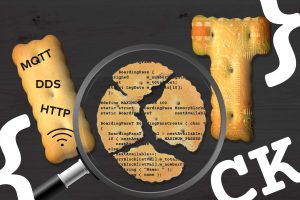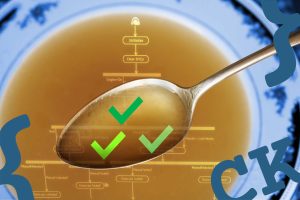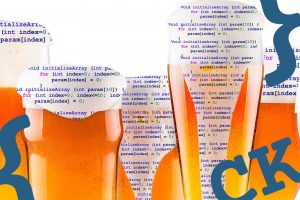Easter egg hunts are all about sweet rewards hidden in hard-to-find places. The tougher they are to spot, the more satisfying they are to discover.
But what if we applied the same idea to software development?
Software Easter Egg Hunting
The “Easter eggs” we’re discussing aren’t hidden minigames in a browser or surprise dev team photos buried in the codebase. They’re the elusive pieces of software we need to track down in our everyday work—dependencies, changes, test coverage gaps, and more.
In theory, coding means crafting a well-designed, tested, and packaged piece of software before moving on to the next task. And most of the time, it works—until it doesn’t. A bug surfaces, a test fails, or a quality check throws a red flag.

Tracking down a bug or uncovering hidden faulty code isn’t just a side task—it’s an essential part of development. While it can come with pressure, solving these issues is part of what keeps projects moving forward.
In a way, developers are on a year-round Easter egg hunt—only the prizes trusted deliveries, ease of maintainability, and good quality code.
How Hard Can Software Traceability Really Be?
At first glance, digging through code might seem simple—just hit Control-F and let search do the work, right?
It’s rarely that simple. Industrial codebases can span millions of lines, spread across countless libraries, and built by teams of developers – some of whom may no longer be around.
It’s not just the volume of code that makes things difficult. Each piece is connected to a web of related artifacts: tests, requirements, and change requests-each with its own complexity and history. That’s where traceability comes in. Tracking these relationships is essential to understanding the big picture.
As if that weren’t enough, software projects are constantly evolving. Every requirements update, code commit, or test run shifts the landscape. Our software Easter eggs don’t just hide – they move. They can take on different shapes, live in unexpected places, and change daily.
So yes, they can be hard to find.

Finding the Easter Eggs in Your Code: A Traceability Approach
As we have seen, software ‘Easter eggs’ can be surprisingly hard to spot. Look at these examples:
“Find the function that was just developed, has a failing test, but isn’t linked to any requirement—in a codebase with over a million lines.”
“Detect which critical coding rule is no longer being followed—somewhere among hundreds of thousands of existing violations.”
“Identify which high-level requirements were recently updated—and verify whether their related design details and test cases were updated accordingly.”
These aren’t just tricky—they’re time-consuming and involve digging across multiple tools, object types, and processes. What do all these examples have in common? They point to a single truth:
We need a complete, connected view of the project to find specific information based on complex conditions.
That means maintaining an aggregated and traceable representation of all development artifacts—code, tests, requirements, and more. From there, we need to apply business logic—high-level and fine-grained filters—to surface what matters most. The goal is to provide clear, contextual views based on how traceability is structured and navigated.
That’s exactly what Squore offers: a monitoring solution that continuously assesses software quality—from individual components to the entire project—by aggregating and analyzing all relevant project data.
The Reward of the Hunt: Better Code, Better Confidence
Finding software Easter eggs is satisfying, but the real reward is what we uncover along the way. Each discovery helps us answer deeper questions and improve our code.
“I found the function I need to work on… and now I know it’s cloned in three other files, and I can optimize their tests, too.”
“Rule 1.2.3 of the coding standard isn’t being followed…and I can immediately see whether it impacts critical parts of the code.”
“I see which tests haven’t been updated for modified requirement 123…and I can also tell whether the associated code was reworked or left untouched.”
The prize is a deeper understanding of your project data—and, with it, confidence in the quality of your delivery.
Conclusion
Hunting for software Easter eggs is a lighthearted way to describe the daily serious, quality-focused tasks developers face.
Making these activities easier and providing clear, actionable insights into overall project quality is essential for keeping software development efficient and engaging.
Further Readings
There’s so much to talk about when it comes to source code quality. These links will tell you more about:
- What Developers Say About Software Quality?
- What a Whole year of Software Quality Monitoring Looks Like
- What Can Go Wrong if You Skip Software Quality
- What is the Squore Monitoring Solution
See how Squore can unlock software excellence with a data-driven approach to quality monitoring!








